:::
Radiation Safety Control of Steel Mills Equipped With Smelting Furnaces
Last Update: Dec 09, 2024
Detection and Control of Abnormal Radioactive Materials
More than 20 years ago some radiation contamination events occurred in Taiwan, inflicting the society and people's lives to some extent. Those who involved in these events were worried about the negative outcomes of possible health effects caused by radiation. Among those abnormal radiation events having occurred, the most outstanding are steel construction materials being contaminated by Cobalt-60 nuclide, lost radiation sources, and slag from iron and steel smelting furnace subject to contamination of Cesium-137 nuclide. And the most significant one was houses being contaminated by radioactively contaminated iron and steel construction materials.
Since the start of implementing radiation detection operation in 1995, iron and steel makers who own smelting furnace(s) are required to install portal type radiation detector(s) as shown in Figure 1, to effectively prevent mis-smelting of radiation sources. Up to 2018, there have been more than 1000 cases of abnormal radioactive materials being detected out from metal scrap in the steel mills. The abnormal radioactive materials mostly belong to scrap materials contaminated by natural radioactive nuclides (Radium-226, Thorium-234 and their decay daughters) as shown in Figure 2, and Cobalt-60 contaminated steel rebar tailing materials and radioactive orphan sources are also included. Some were from imported scrap metal; some were from scrap metal collected by scrap metal collectors. From the statistical analysis data as shown in Tables 1, 2 and Figures 3, 4 , 5, Taiwan has made a great achievement in establishing regulatory control system in preventing contamination of iron and steel by radiation sources from recurring.
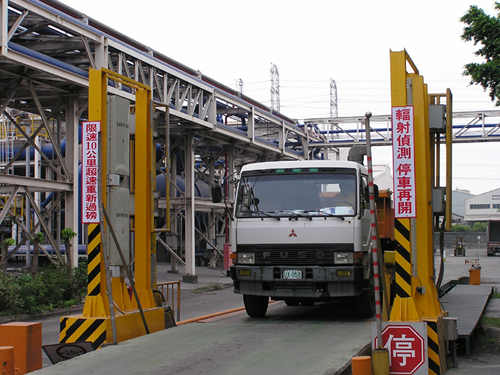
Figure 1. Portal Type Radiation Detector
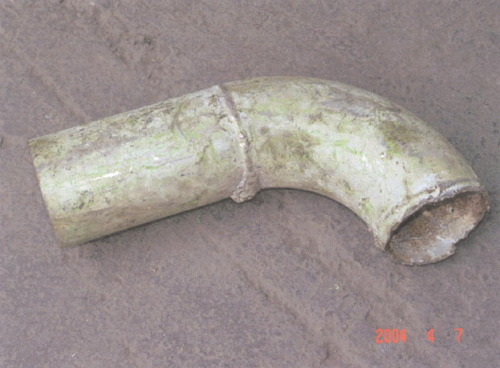
Figure 2. Found Steel Tube (containing Uranium and Thorium natural radioactive nuclides)
Table 1. Statistics of Found Cases of Abnormal Radioactive Materials
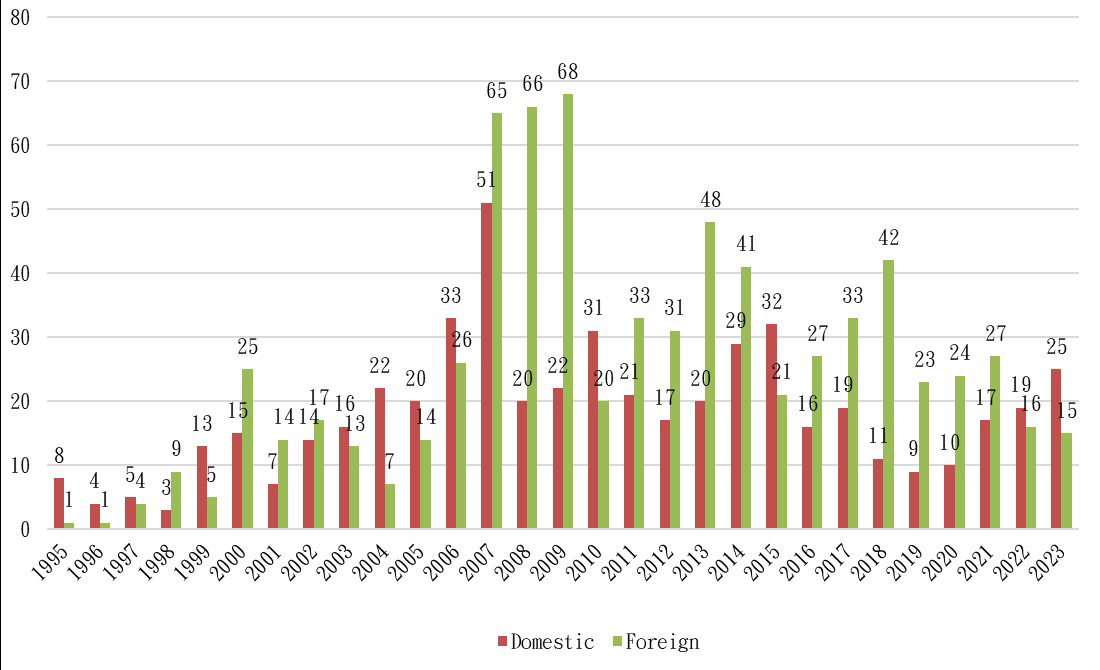
Figure 3. Yearly Statistics of Iron and Steel Mills' Abnormal Radioactive Materials.
Table 2. Categorical Statistics of Found Cases of Abnormal Radioactive Materials
*1 Including Radiation Sources for calibration use
*2 Others means scrap iron containing Naturally Occurring Radioactive Materials(NORM)
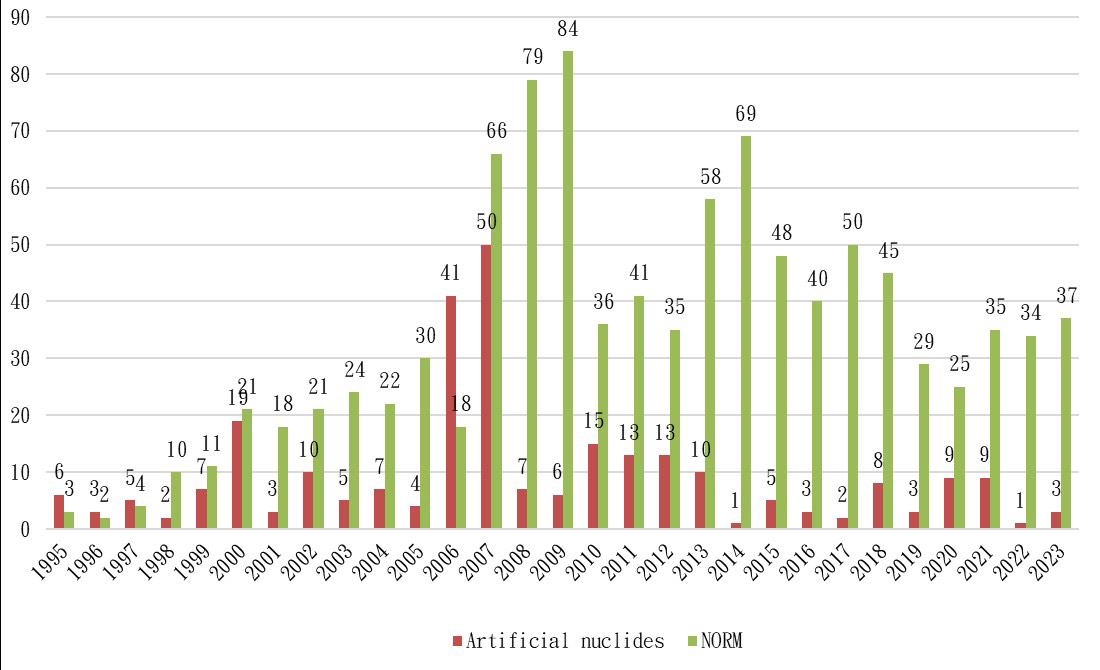
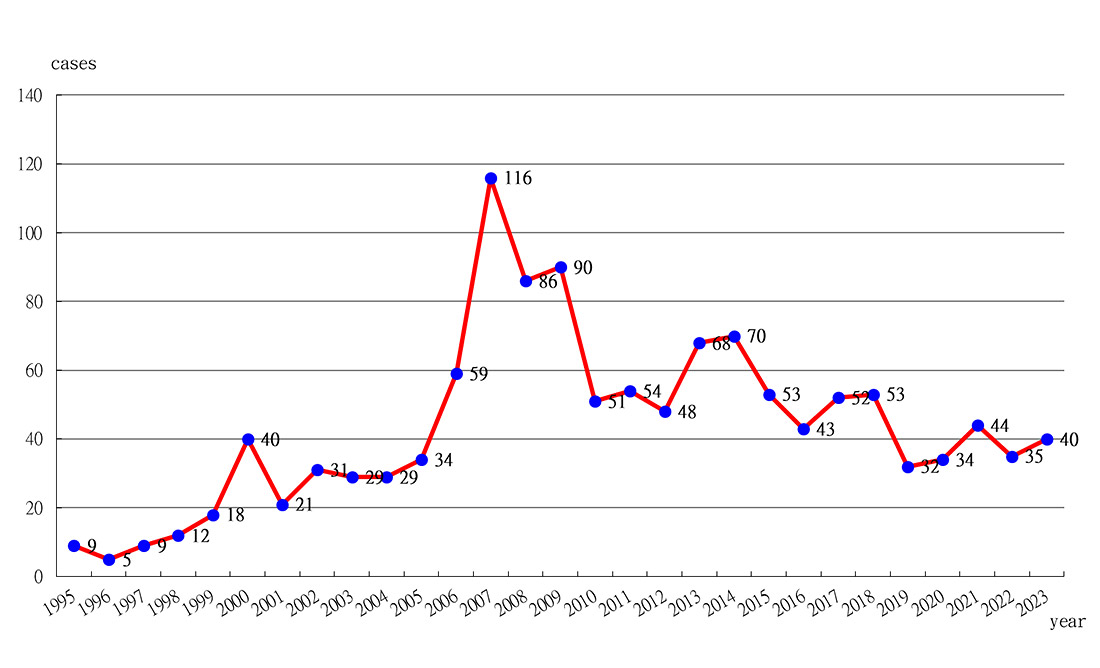
On-Duty Nuclear Safety Center
For instant response to and handling of unexpected events, whether it be of nuclear, radiation, or other kinds of emergency or abnormal nature, Nuclear Safety Commission (NSC) has established a 24-hour On-Duty Nuclear Safety Center, functioning as a sole window for emergency reporting and communication by competent authorities. There are some tasked staff responsible for receiving, studying, relaying and instant handling of reporting events; once abnormal radioactive material is discovered, the NSC shall be immediately informed to ensure the radiation safety for the public.
Assisting and Auditing of Radiation Detection Operation of Steel Mills Owning Furnace
There are 17 steel mills owning furnace in Taiwan. Since 2008, NSC has been conducting yearly tasked audit to assess the radiation detection operation at the steel mills. Focal points were: detection operational procedures for incoming steel scrap up to outbound products, alarm functional test of portal type radiation detector, handling mechanism with abnormal radioactive materials and establishment of relevant radiation detection system. The results of the audits have shown that the operations of these radiation detection systems were in compliance with regulatory requirements. The radiation detection system established at steel mills has successfully prevented smelting of radiation sources during processing.

Outbound steel products radiation detection in a steel mill
More than 20 years ago some radiation contamination events occurred in Taiwan, inflicting the society and people's lives to some extent. Those who involved in these events were worried about the negative outcomes of possible health effects caused by radiation. Among those abnormal radiation events having occurred, the most outstanding are steel construction materials being contaminated by Cobalt-60 nuclide, lost radiation sources, and slag from iron and steel smelting furnace subject to contamination of Cesium-137 nuclide. And the most significant one was houses being contaminated by radioactively contaminated iron and steel construction materials.
Since the start of implementing radiation detection operation in 1995, iron and steel makers who own smelting furnace(s) are required to install portal type radiation detector(s) as shown in Figure 1, to effectively prevent mis-smelting of radiation sources. Up to 2018, there have been more than 1000 cases of abnormal radioactive materials being detected out from metal scrap in the steel mills. The abnormal radioactive materials mostly belong to scrap materials contaminated by natural radioactive nuclides (Radium-226, Thorium-234 and their decay daughters) as shown in Figure 2, and Cobalt-60 contaminated steel rebar tailing materials and radioactive orphan sources are also included. Some were from imported scrap metal; some were from scrap metal collected by scrap metal collectors. From the statistical analysis data as shown in Tables 1, 2 and Figures 3, 4 , 5, Taiwan has made a great achievement in establishing regulatory control system in preventing contamination of iron and steel by radiation sources from recurring.

Figure 1. Portal Type Radiation Detector

Figure 2. Found Steel Tube (containing Uranium and Thorium natural radioactive nuclides)
Table 1. Statistics of Found Cases of Abnormal Radioactive Materials
| Year | Domestic | Foreign | Total |
|---|---|---|---|
| 1995 | 8 | 1 | 9 |
| 1996 | 4 | 1 | 5 |
| 1997 | 5 | 4 | 9 |
| 1998 | 3 | 9 | 12 |
| 1999 | 13 | 5 | 18 |
| 2000 | 15 | 25 | 40 |
| 2001 | 7 | 14 | 21 |
| 2002 | 14 | 17 | 31 |
| 2003 | 16 | 13 | 29 |
| 2004 | 22 | 7 | 29 |
| 2005 | 20 | 14 | 34 |
| 2006 | 33 | 26 | 59 |
| 2007 | 51 | 65 | 116 |
| 2008 | 20 | 66 | 86 |
| 2009 | 22 | 68 | 90 |
| 2010 | 31 | 20 | 51 |
| 2011 | 21 | 33 | 54 |
| 2012 | 17 | 31 | 48 |
| 2013 | 20 | 48 | 68 |
| 2014 | 29 | 41 | 70 |
| 2015 | 32 | 21 | 53 |
| 2016 | 16 | 27 | 43 |
| 2017 | 19 | 33 | 52 |
| 2018 | 11 | 42 | 53 |
| 2019 | 9 | 23 | 32 |
| 2020 | 10 | 24 | 34 |
| 2021 | 17 | 27 | 44 |
| 2022 | 19 | 16 | 35 |
| 2023 | 25 | 15 | 40 |
| Total | 529 | 736 | 1,265 |

Figure 3. Yearly Statistics of Iron and Steel Mills' Abnormal Radioactive Materials.
Table 2. Categorical Statistics of Found Cases of Abnormal Radioactive Materials
| Year | Contaminated Iron and Steel | Radioactive Sources *1 | Others *2 | Total |
|---|---|---|---|---|
| 1995 | 5 | 1 | 3 | 9 |
| 1996 | 2 | 1 | 2 | 5 |
| 1997 | 4 | 1 | 4 | 9 |
| 1998 | 1 | 1 | 10 | 12 |
| 1999 | 3 | 2 | 13 | 18 |
| 2000 | 8 | 4 | 28 | 40 |
| 2001 | 1 | 0 | 20 | 21 |
| 2002 | 4 | 4 | 23 | 31 |
| 2003 | 2 | 3 | 24 | 29 |
| 2004 | 2 | 2 | 25 | 29 |
| 2005 | 3 | 2 | 29 | 34 |
| 2006 | 5 | 4 | 50 | 59 |
| 2007 | 32 | 7 | 77 | 116 |
| 2008 | 2 | 2 | 82 | 86 |
| 2009 | 2 | 3 | 85 | 90 |
| 2010 | 9 | 5 | 37 | 51 |
| 2011 | 5 | 5 | 44 | 54 |
| 2012 | 3 | 5 | 40 | 48 |
| 2013 | 2 | 6 | 60 | 68 |
| 2014 | 0 | 1 | 69 | 70 |
| 2015 | 2 | 2 | 49 | 53 |
| 2016 | 0 | 2 | 41 | 43 |
| 2017 | 2 | 0 | 50 | 52 |
| 2018 | 1 | 4 | 48 | 53 |
| 2019 | 0 | 5 | 27 | 32 |
| 2020 | 2 | 1 | 31 | 34 |
| 2021 | 1 | 3 | 40 | 44 |
| 2022 | 0 | 1 | 34 | 35 |
| 2023 | 0 | 2 | 38 | 40 |
| Total | 103 | 79 | 1,083 | 1,265 |
Note
*1 Including Radiation Sources for calibration use
*2 Others means scrap iron containing Naturally Occurring Radioactive Materials(NORM)

Figure 4. Yearly Categorical Statistics of Discovered Abnormal Radioactive Materials by Iron and Steel Mills.

Figure 5. Yearly Trend of Found Cases of Abnormal Radioactive Materials by Iron and Steel Mills.
On-Duty Nuclear Safety Center
For instant response to and handling of unexpected events, whether it be of nuclear, radiation, or other kinds of emergency or abnormal nature, Nuclear Safety Commission (NSC) has established a 24-hour On-Duty Nuclear Safety Center, functioning as a sole window for emergency reporting and communication by competent authorities. There are some tasked staff responsible for receiving, studying, relaying and instant handling of reporting events; once abnormal radioactive material is discovered, the NSC shall be immediately informed to ensure the radiation safety for the public.
Assisting and Auditing of Radiation Detection Operation of Steel Mills Owning Furnace
There are 17 steel mills owning furnace in Taiwan. Since 2008, NSC has been conducting yearly tasked audit to assess the radiation detection operation at the steel mills. Focal points were: detection operational procedures for incoming steel scrap up to outbound products, alarm functional test of portal type radiation detector, handling mechanism with abnormal radioactive materials and establishment of relevant radiation detection system. The results of the audits have shown that the operations of these radiation detection systems were in compliance with regulatory requirements. The radiation detection system established at steel mills has successfully prevented smelting of radiation sources during processing.

Outbound steel products radiation detection in a steel mill
